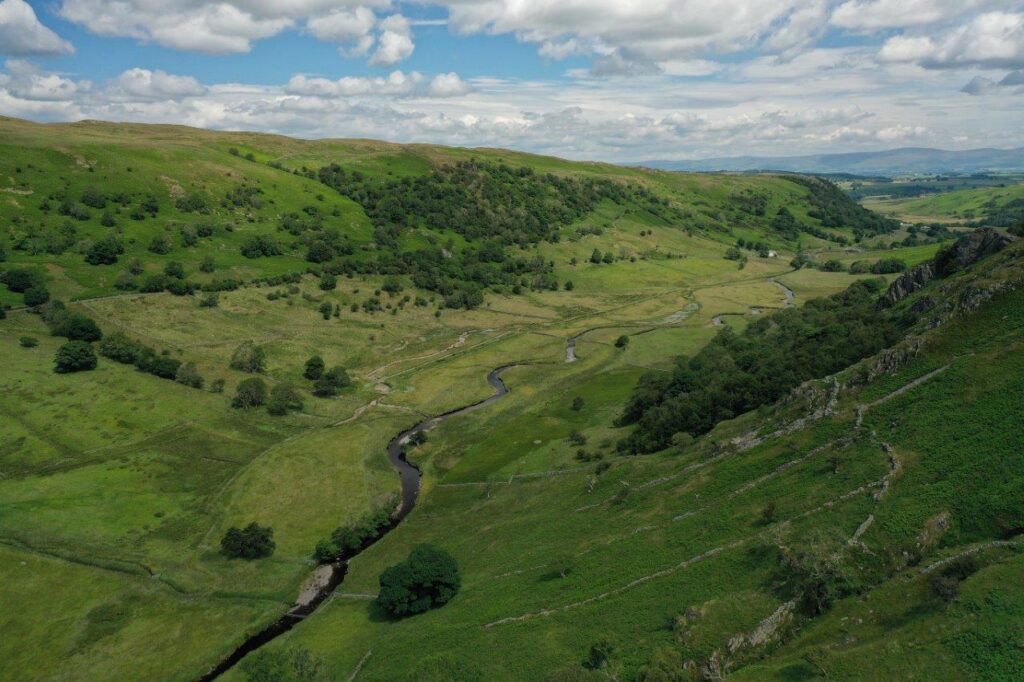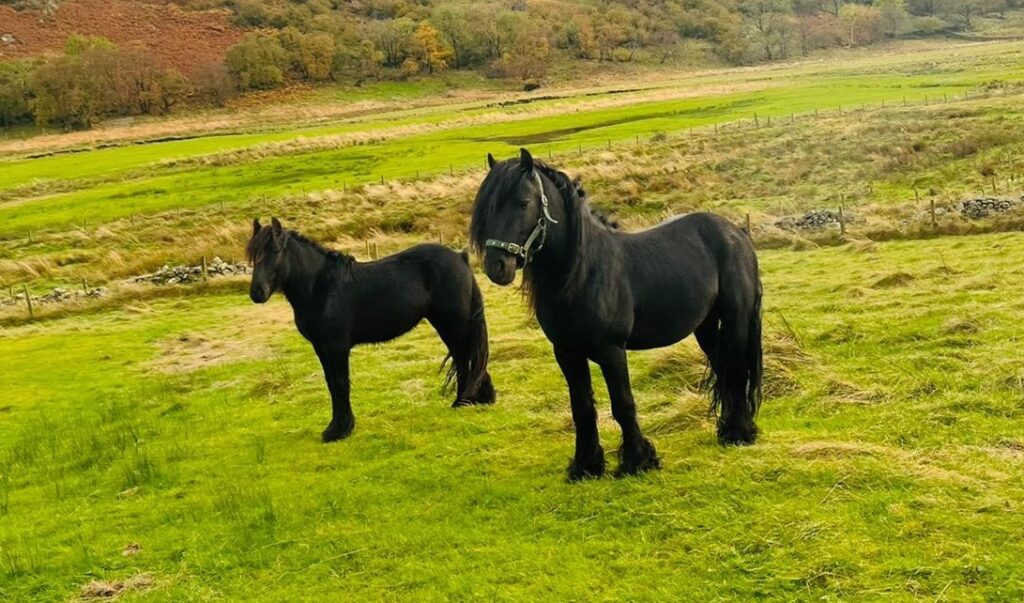
Haweswater tweed throw in blue, image credit: Lake District Tweed
We’re excited that a unique Haweswater tweed has been produced by Cumbrian company Lake District Tweed and it is proving to be popular in the US as well as at home.
Lake District Tweed began producing tweed inspired by different valleys across the Lake District in 2020 and the Haweswater tweed is the latest one to be added to their collection of eight, the plan being to eventually have thirteen tweeds by next year.
“We originally had the idea to make tweed from our own wool and then managed to get the funding from the Farming in Protected Landscapes fund, part of DEFRA’s Agricultural Transition Plan, to make this happen.
“I’m Scottish and in Scotland tweeds are linked to families. I came up with the idea of linking our tweeds to places in the Lakes, so it was inspired by my Scottish roots. Too many things are made overseas, and we wanted to make something in the Lake District, from Lake District wool. A truly locally produced, quality product.”
– Maria Benjamin, who created Lake District Tweed on her farm at Nibthwaite, Coniston, along with her partner John Atkinson
The Haweswater tweed is their newest addition, and the pattern has been inspired by our story of re-wiggling Swindale Beck.
Many of you will know that in 2016, along with United Utilities who own Haweswater, Natural England and the Environment Agency, we put the natural bends back into a one kilometre stretch of Swindale Beck, which had been artificially straightened around two centuries ago. This restoration work was to slow the flow of the river, creating suitable habitat for spawning salmon and trout, improving water quality, and contributing to reducing the risk of downstream flooding. Now, its meandering course is being recognised in the new tweed, using wool from our very own sheep here at Haweswater.

The re-wiggled course of Swindale Beck, image credit Google
“We were thrilled when Maria and John approached us about creating a Haweswater tweed. Here we are carrying out large-scale ecological restoration in a way that is compatible with sustainable upland farming. Our flock of North Country Cheviot sheep, alongside our Fell Ponies and Belted Galloway, Highland and Luing cattle help to sustain the landscape’s rich mosaic of woodlands, meadows, mountains, bogs and streams. The story of putting the bends back into Swindale Beck has really captured the hearts of the public, so the wiggly pattern in the tweed, using our very own sheep’s wool, is the perfect nod to our conservation and farming work here.”
– Lee Schofield, RSPB Site Manager at Haweswater

Our flock of Cheviot sheep on the move between fields with our Livestock Assistant Faith and our sheepdogs (L-R) Aska, Sam and Ted. Image Credit: Annabel Rushton
Maria and John called upon the expertise of the Lancs and Lakes Guild of Weavers, Spinners and Dyers to help them come up with workable tweed designs based on unique aspects of each valley in their range. The Haweswater tweed comes in two colour options – blue and white, and green and white. It has been made into throws, priced at £140. The eight tweed patterns are inspired by Haweswater, Ennerdale, Coniston, Windermere, Ullswater, Borrowdale, Langdale and Grasmere.
All processing: the washing, combing, spinning and weaving takes place in Yorkshire and North West England and the next batch of wool has arrived at Haworth Scouring for washing this week.
Haworth Scouring, where the wool is washed, is in the heart of the UK’s textile centre and is one of the largest, modern, and environmentally responsible commission wool scours in the world. Located on an 8-acre purpose site which include both Haworth Combing and Enco Global Testing, Haworth Scouring can scour up to 1,000.000kgs wool per week.
To produce the tweed, the wool goes to the British Wool Board who grade it, then it goes to Bradford to be washed and cleaned. It is then spun in Huddersfield and finally to Oldham where it is woven into the finished tweed. Completed products are sold via the Lake District Tweed website. Farmers receive an above the market price for the wool they supply for the tweed and a profit share from sales of the tweeds and throws.
“Haweswater throws are selling like hot cakes, and we’ve been surprised how quickly they have sold.
“We sell a lot to America – 40% of our customers are from the US – people love the Lake District, and even if they’ve not visited here before they know the brand and the name and have seen it on films.
“Word has really got out about us. It’s amazing, when we go to farm events and shows, we’re approached to buy people’s wool.
“Making a premium product from something that would likely have been burned or gone into compost is a great feeling. Wool breathes, it keeps you warm, it lasts for years and it’s sustainable.”
– Maria Benjamin

Faith Garvey our Livestock Assistant checking on our flock with her sheepdog Aska. Image Credit: Annabel Rushton
“We’re proud that our sheep’s fleeces are being used for this special tweed. Sadly, British sheep’s wool doesn’t often have much of a market these days, so given the work that goes into caring for our flock and shearing them each year, it’s incredible to see it being used for this unique Cumbrian product. And even better to know that it’s not only popular here in the Lake District, but in the United States too!”
– Faith Garvey, RSPB Livestock Assistant at Haweswater
To find out more or to buy a Haweswater tweed throw visit: lakedistricttweed.com/
Discover more about the work of the RSPB and United Utilities at Haweswater here: wildhaweswater.co.uk
Don’t forget to follow us on Facebook, Twitter and Instagram for updates.
– Blog by Annabel Rushton, RSPB Visitor Experience Manager at Wild Haweswater


